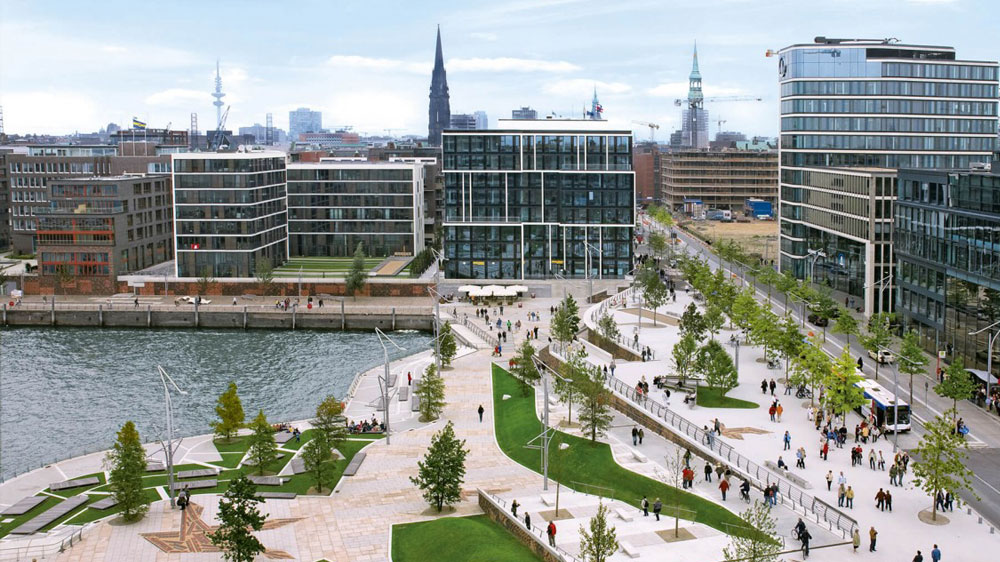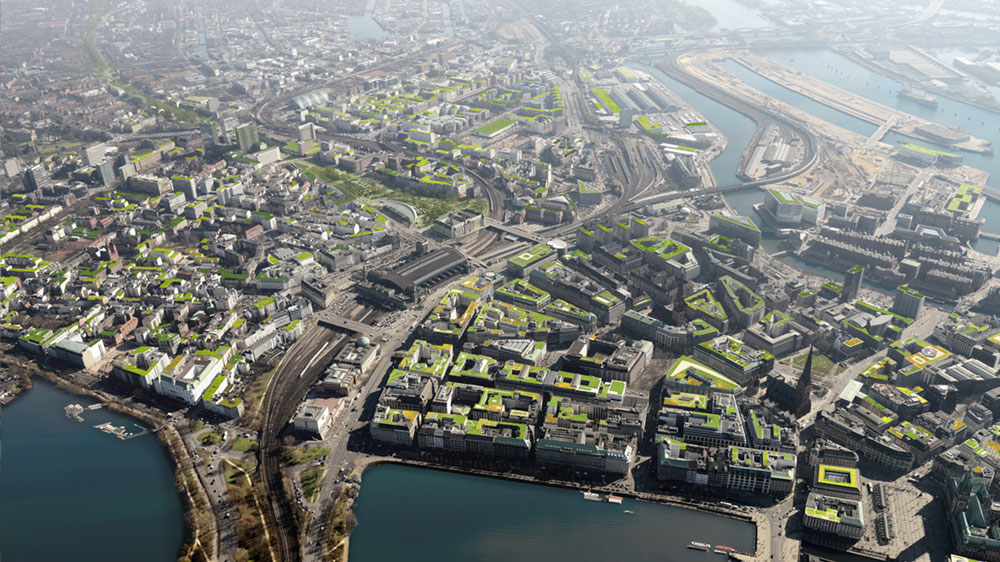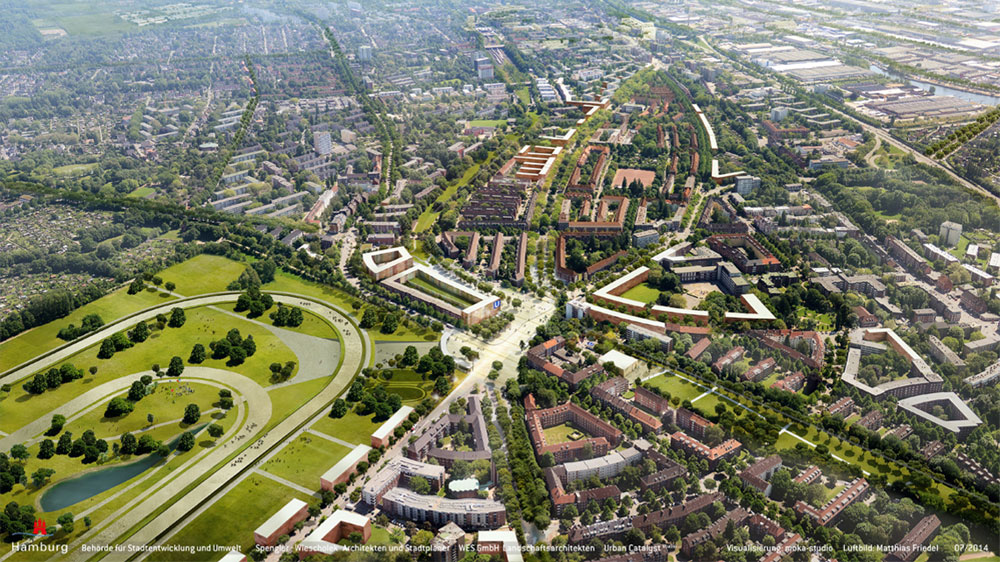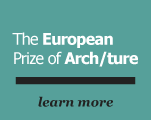City of Hamburg wins Good Design Award as the 2021 Green City of the Year Tell a friend
CHICAGO, ILLINOIS….APRIL15, 2021 — The European Centre for Architecture Art Design and Urban Studies and The Chicago Athenaeum: Museum of Architecture and Design have named Hamburg, Germany as the Green City of the Year for 2021.
Founded in Chicago in 1950 by architects Charles and Ray Eames and Eero Saarinen, Good Design© is the oldest and the most prestigious award for design excellence worldwide.
Each year, thousands of international designers, manufacturers and FORTUNE 500 companies from over 50 nations submit their latest designs to The Chicago Athenaeum to be judged for their latest product’s design innovation, advanced technology, sustainability, and overall design aesthetic and excellence—all seeking the highly coveted Good Design Award.
Based on design criteria set in the original 1950’s Good Design program established by The Museum of Modern Art (MoMA), everything and anything is awarded from the “spoon to the city.”
“We are delighted that the City of Hamburg is presented with this year’s prestigious Green Good Design Award for the city’s remarkable achievements and leadership in putting sustainability at the top of its urban agenda,” states Kieran Conlon, Director of The European Centre.
Hamburg, a major port city in northern Germany, is the second largest city in the country. The town is connected to the North Sea by
Elbe River and currently numbers a population of nearly 2 million people.
One of the ten most sustainable cities in the world, voted as the European Green Capital for 2011, the City of Hamburg is growing greener every year with the catchphrase "TAKE NOTHING BUT PICTURES, LEAVE NOTHING BUT FOOTPRINTS." The city makes ambitious environmental plans and, more importantly, it reaches its goals. Focusing on the renewable energy sector's growth and embracing a high ecological standard are just two of them.

HafenCity by KCAP Architects & Planners in Hamburg, Germany
Vision-Innenstadt (c) BUE TH Treibhaus Landschaftsarchitektur Luftbild Matthias Friedel
City of Hamburg, Germany
“The European Centre has long recognized the important role that local authorities play in improving the environment and their high level of commitment to genuine progress,” continues Conlon.
“In 2010, The City of Madrid and in 2012 the Kingdom of Sweden were past recipients of Green Good Design.”
“Our institutions in the United States and in Europe applaud Mayor Peter Tschentscher for the City of Hamburg’s consistent record
of achieving high environmental standards and for its ongoing and ambitious goals to further environmental improvement and
sustainable development.”
Hamburg is called "green waterfront city" for a reason. With forest, green and recreational spaces, nature reserves and protected
landscape areas covering 44.5 percent of the metropolitan area, and a switch to climate-friendly mobility, Hamburg managed to
successfully combine Industrial and Green.
Over the previous decades, Hamburg has achieved outstanding environmental standards by reducing the CO2 emissions in the city on a significant scale. More specifically, an 18% reduction was achieved from 1990 to 2006, a 40% from 2006 to 2020, and by 2050, CO2 emissions are expected to be reduced by 80%.
“Hamburg’s role model should inspire other cities and promote the best sustainability practices to all other European and world-class cities," adds Conlon.
“Hamburg is well known as one of the happiest places on Earth and one of the best cities to live in.”
“Discovering its green scene and you’ll soon realize why.”
From making urban districts greener to creating accommodation options compatible with high environmental values, Hamburg has earned its title as a pioneer in sustainable city development. Some of the city’s sustainable highlights are:
HafenCity: Efficient and climate-compatible urban structures, trendsetting mobility concepts, and green spaces
can form a better future.
The master plan for Hamburg’s HafenCity was an international competition won by KCAP Architects & Planners, ASTOC Architects and Planners, and Hamburgplan AG in 2000. On a total area of approx. 150 hectares of land previously part of the port space and right on the waterfront, the plan provides for the progressive creation of new offices and new housing for 12,000 people and around 40,000 jobs with a slated completion date of 2025.
Osaka 9 Sustainability Pavilion: When urban development becomes eco.
Osaka 9 Sustainability Pavilion is a 120-square-meter part of Hamburg's ecological oasis, HafenCity. This place is the epitome of the ecological urban development: Mixed-use city structure efficient with resources, mobility structure saving time and reducing carbon emissions, and sustainable energy supply and certified buildings.
Energieberg Georgswerder: From toxic waste dump to a superior example of renewable energy generation.
One of the many Hamburg city transformations is the former landfill/mountain-of-waste in Georgswerder. The place has been transformed into a mountain-source of renewable energy with four wind turbines and photovoltaic units established and an information center where one can learn everything about the past and the glorious present of the place in an exhibition called "The Tamed Dragon."
The Green Network (GrünesNetzHamburg): A 100-year-old green design concept.
Hamburg's Green Network, or as it is called, the GrünesNetzHamburg, started more than 100 years ago, when, in 1919, city planner Fritz Schumacher proposed an 'Axial Concept' to provide Hamburg citizens with plentiful recreational opportunities and easy access to nature. The Green Network is still thriving, making the city an "outburst" of green culture!
The Green Roof Project: Green on top of grey is what every city needs.
Visiting Hamburg makes you wonder why don’t we create green oases on top of our buildings. This is exactly one of the things that our world needs now, and Hamburg has been doing it since 2015. From entire green landscapes to small rooftop gardens and thin layers of moss, green roofing comes in many forms and helps numerably.
Science Center WÄLDERHAUS: A place dedicated to "Forest and Wood."
At the Wilhelmsburger Inselpark in Hamburg, one can find the WÄLDERHAUS Science Center, a space dedicated to the forest's significance. Eighty installed stations provide information and explanations of how the forest influences Earth's ecological system.
Hamburg is officially the Green City of the Year and, without a doubt, deserves this title considering that both the city and its residents continue their endeavors to preserving high ecological and sustainable standards.
The City of Hamburg will be featured in the "Green Good Design 2021" exhibition organized by The European Center and The Chicago Athenaeum and hosted at the Contemporary Space Athens, Greece, from the 14th to the 30th of May, 2021.
The City of Hamburg is also featured along with 150 other 2021 Green GOOD DESIGN winners in an upcoming book entitled GREEN GOOD DESIGN, which is published by Metropolitan Arts Press Ltd.
Copies of the book can be ordered through Metropolitanartspress.com or at konstadina@europeanarch.eu
For more exhibition information, contact Konstadina Geladaki at konstadina@europeanarch.eu
The deadline for GREEN GOOD DESIGN 2022 is January 15, 2022.
For more information, www.chi-athenaeum.org or www.europeanarch.eu
For photographs, publication, and exhibition information, contact Fachanan Conlon at TEL/FAX: +353/(0)1-670 8781
or by email at fachanan@europeanarch.eu















